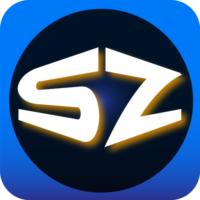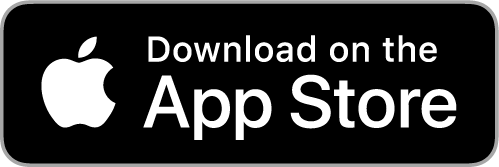Lesson 1
Introduction: Songwriting and recording
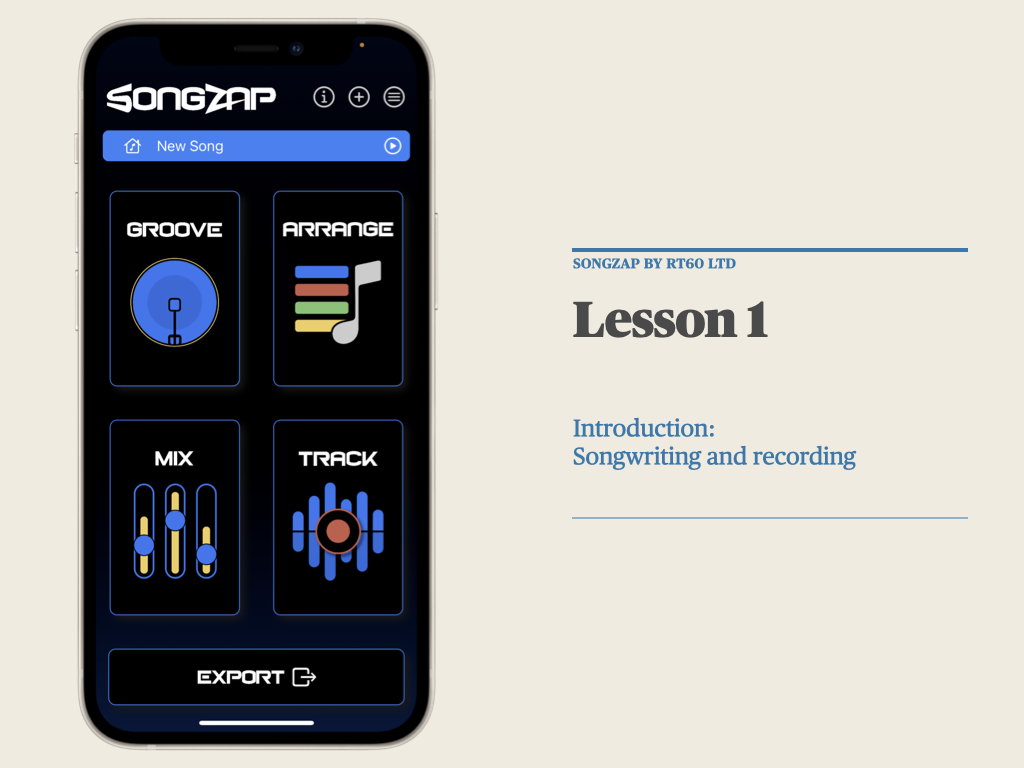
Lesson aims
- Understand the difference between a musical idea, a performance and a recorded song
- Be able to analyse existing pieces of music and identify elements such as: genre, instrumentation, rhythm, structure, effects and lyrical themes
- Acquire familiarity with capturing any sound (musical and/or environmental), using simple audio recording software and the microphone on mobile devices
- Consider the benefits of recording practice as both craft and reflective process
- Share recorded musical/sonic elements and engage in creative collaboration
Getting started with Songzap
A great way to familiarise yourself with the concepts and practice of recording songs is to consider the differences between: a musical idea (a concept), a performance of that idea (with one’s voice and/or an instrument), and then a recorded version of that idea (in the form of a released song). It’s a simple conceptual exercise that highlights the journey between inception and the creation of a tangible sonic output that listeners can enjoy. Somewhere in between lie the creative processes and technologies that allow for this manifestation to take place.
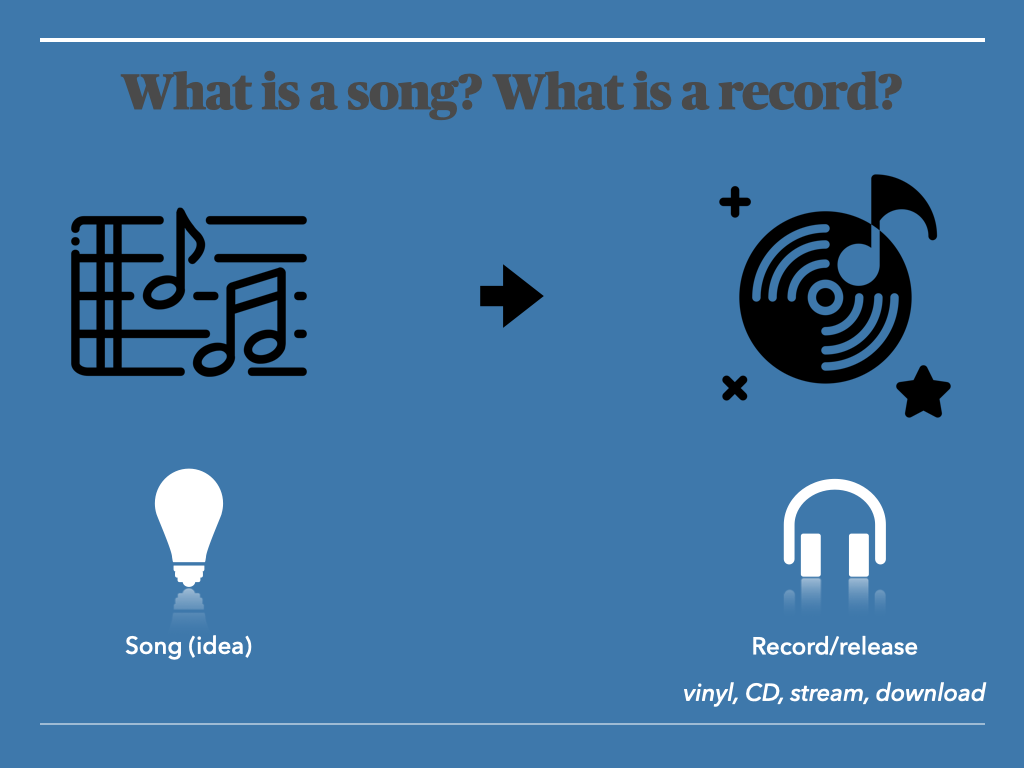
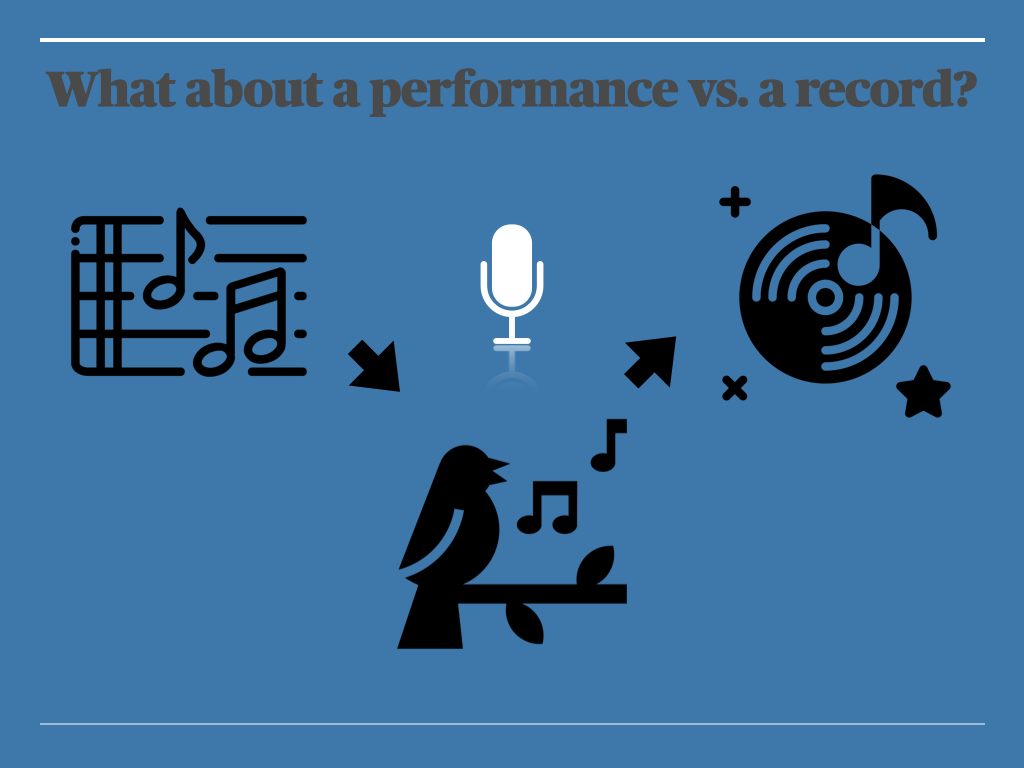
Think of a song by a popular artist, which is available both as a live performance and as a released production (in audio or video form). The overall aim of this course is to introduce you to the world of recording in a simple and welcoming fashion, at the same time, showcasing that song creation and recording craft are inseparable in contemporary musical practice, dissemination and consumption. At the end of this lesson, you should grasp simple concepts about the value of recording musical ideas, acquire a practical understanding of how acoustic events are best captured by accessible digital technologies, and draw links between the songs you appreciate in your environment and how the musical elements they are made of correlate to virtual representations (and actions/processes) in audio software. Below are a list of questions you should try to answer and practical actions you should try out, to get you thinking and to kick off your experimentation with Songzap (this format persists throughout the course for consistency):
- What is a song (idea)? What is a record or release (in the form of vinyl, CD, stream or download)? What’s the difference?
- Play a live performance by an artist of your choice, then find and play the released version of the same song (e.g. on Spotify or Apple Music)
- How do we go from a musical idea to a recording?
- Make a sound (with your voice or an instrument)
- Locate the microphone on your phone device (see images below)
- Capture that sound: record speech, singing or an acoustic instrument on a single track in Songzap’s Tracking page
- Note how the captured acoustic event appears as a waveform on the track display (similar to a ‘voice memo’ recording)
- Why should we use headphones when recording? (Songzap blog post on headphone use)
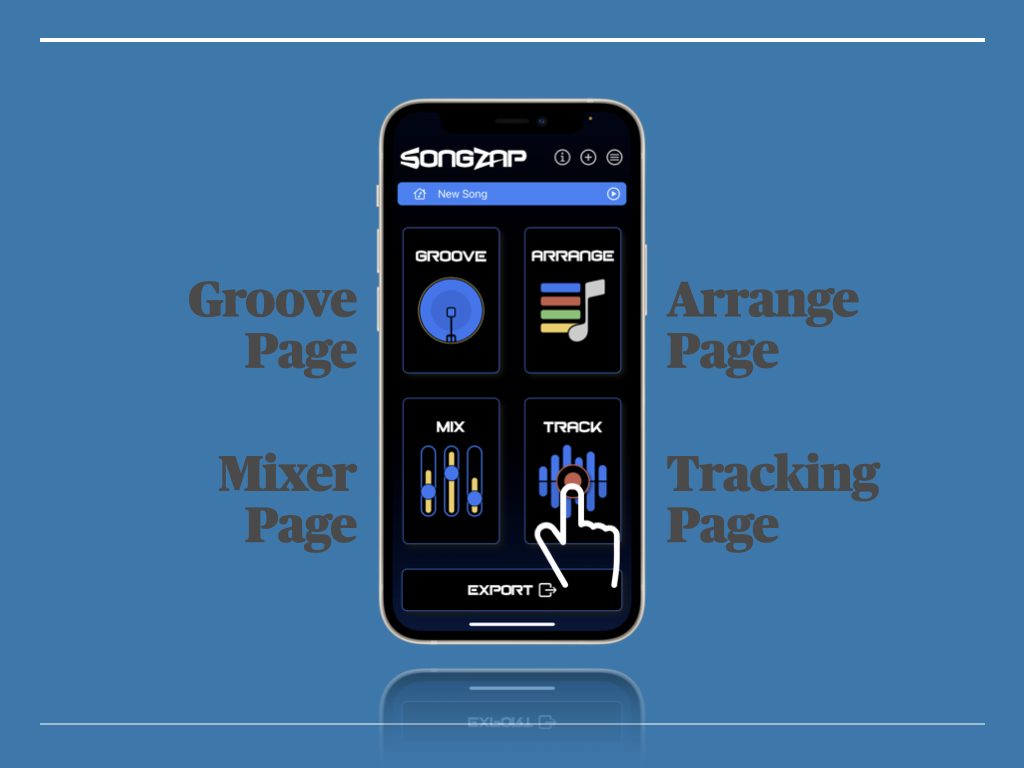
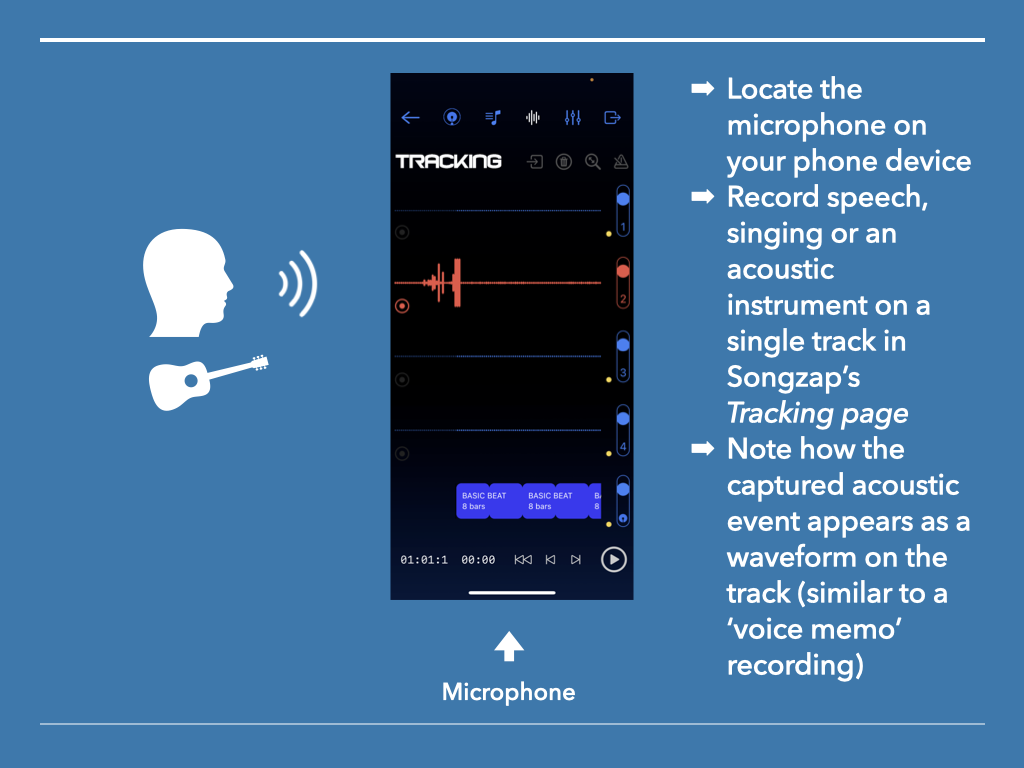
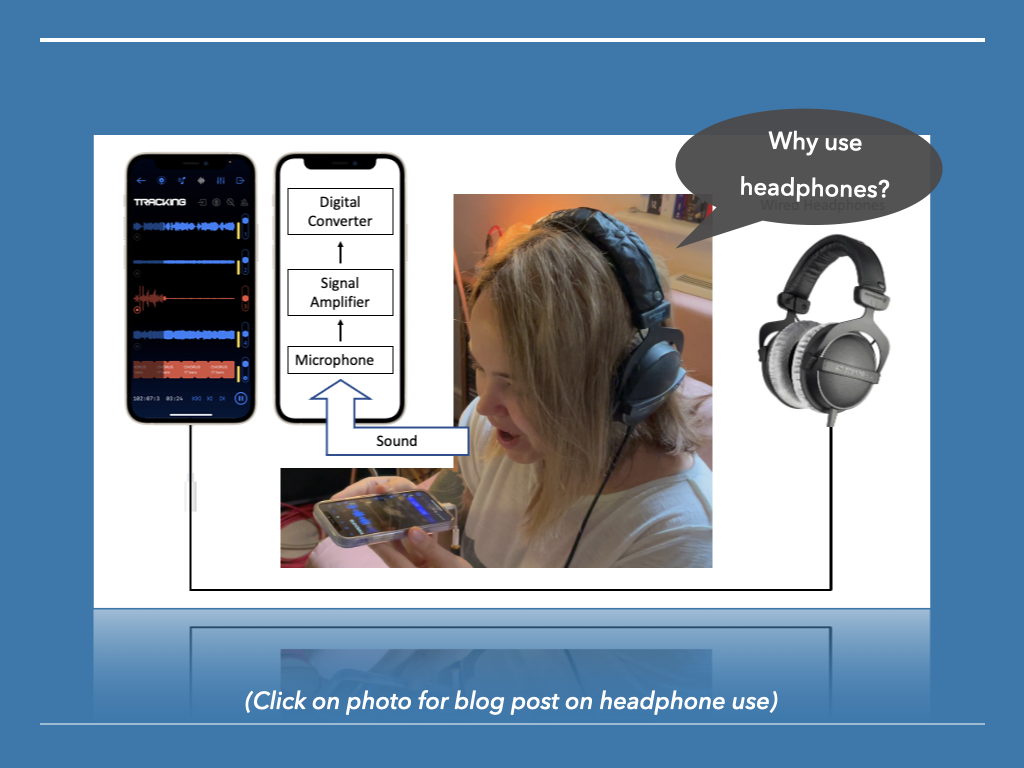
Explore (a pre-recorded demo)
Now is a good time to explore a song where the component parts are fully accessible to you. Having experimented with the basic actions of capturing an acoustic event or performance, and seeing it appear on the Tracking page as a waveform, it will be valuable to make a leap by listening to the included Songzap demo ‘…’ by Ethan Ash, and then analyse the individual tracks and elements that contribute to the playback experience. The aim here is to deconstruct the listening experience and draw out the elements essential to song creation:
- Play Ethan Ash’s demo
- What instruments do you identify (voice, harmony, two guitars, percussion)?
- Picture this: What space is Ethan in (room, hall, stadium, outdoors)? How close or far is he, his guitar(s), the percussion?
- Look at the Tracking page, watch the waveforms
- See the song sections at the bottom (intro, verse, bridge, chorus)
- Switch to the Arrange page: see those same sections in block form
- Switch to the Mixer page, watch the meters
- Solo and isolate individual tracks
- Move some of the faders
- What is the function of the effects?
- Add more reverb to Ethan’s voice
- Switch to the Groove Designer page
- Explore the interface and see the notation change
- How many drums make up the song’s percussion part?
- Why do we (have to?) use notation? (A way to ‘record’ ideas, prior to recording technology; a way to demonstrate ideas to others; also, a way to edit in Songzap)
- Tap on the notation screen to remove or add drum hits
- Why do musicians make demos? (access to technology, technical know-how, as a way to craft and share ideas with other musicians/producers)
- Tap on a page’s title to open up a map of all its functions
- Tap at the bottom of a page’s function map to open up dedicated Web Tutorials
- Watch ‘Making the Songzap Demo’
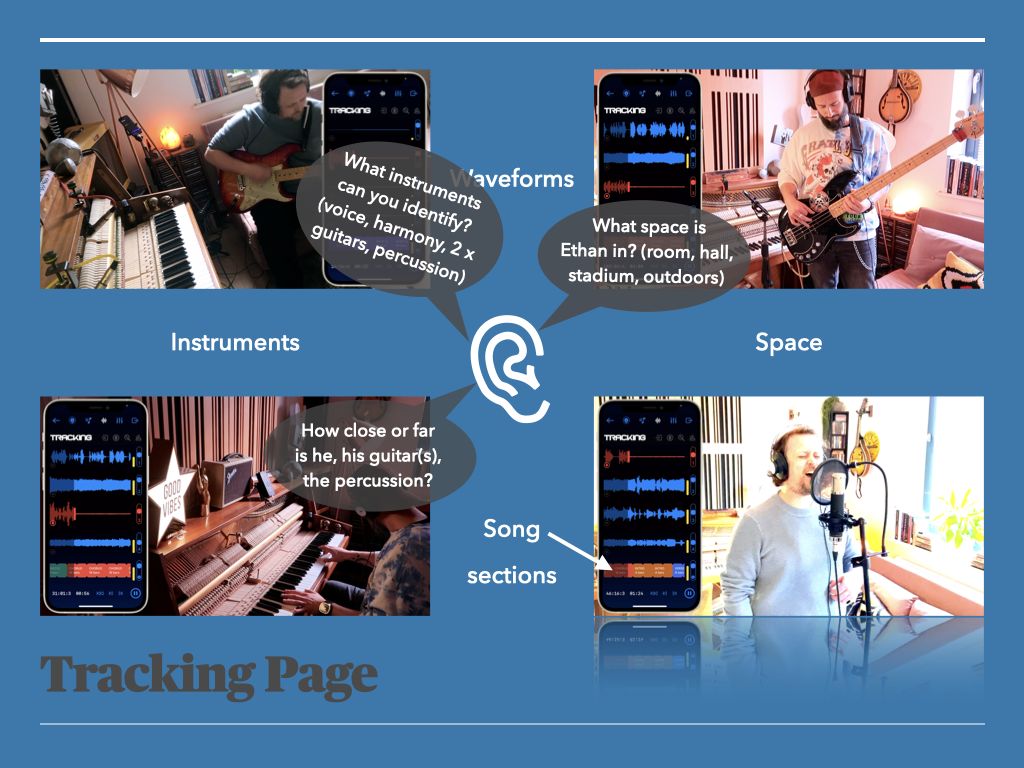
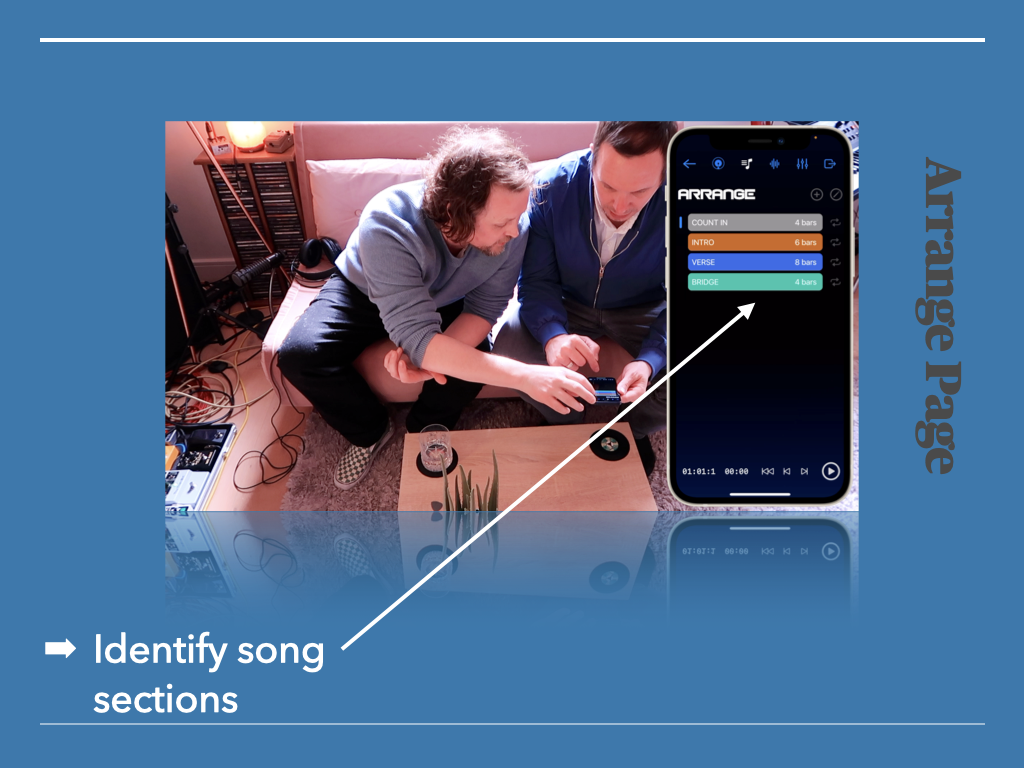
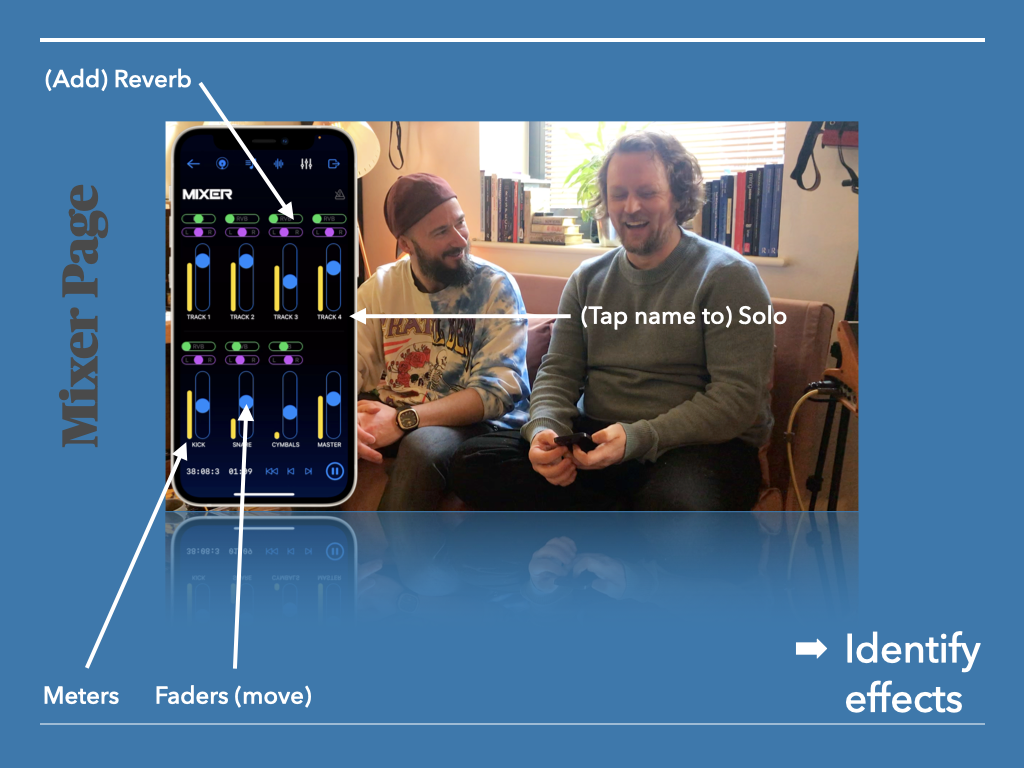
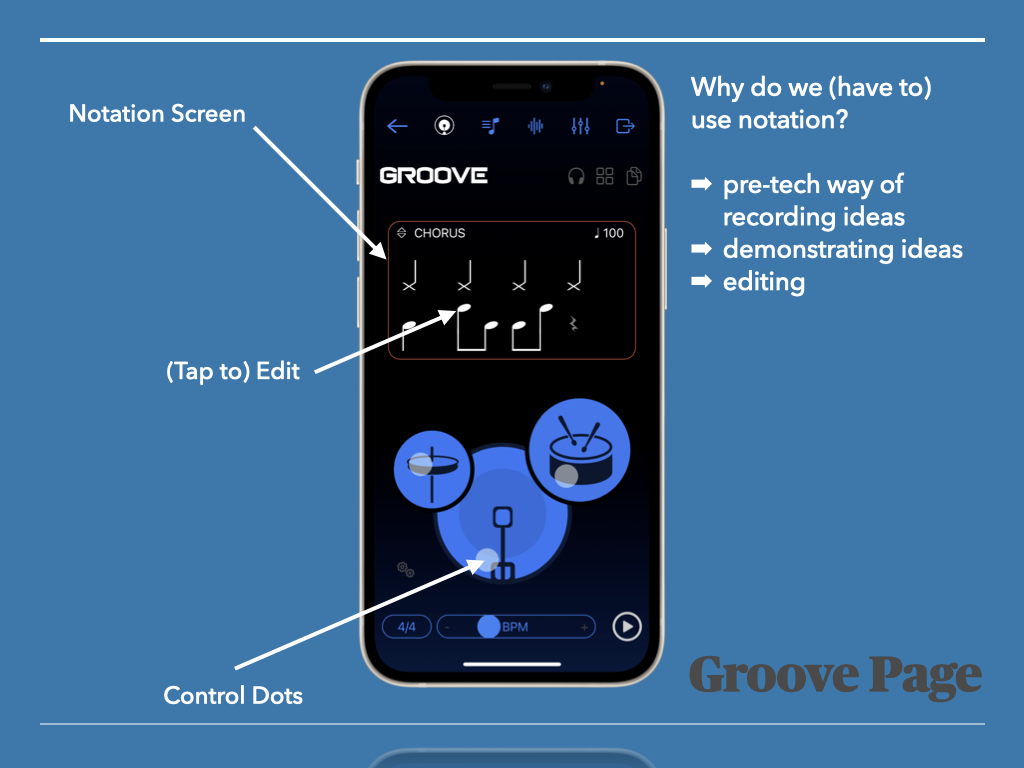
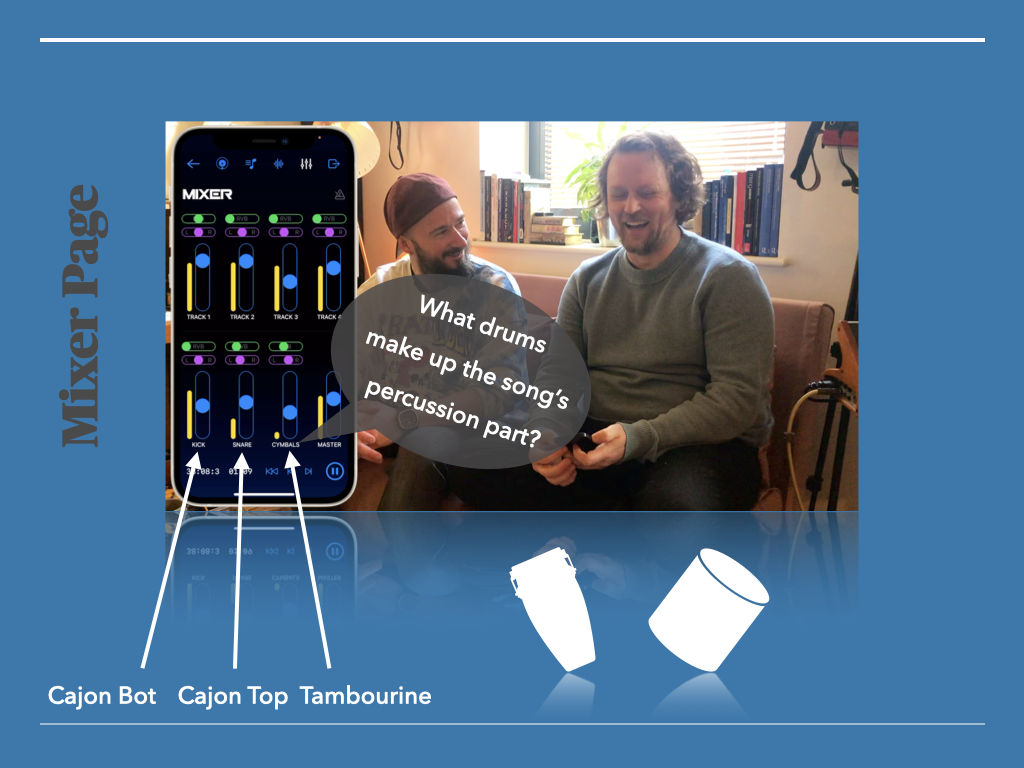
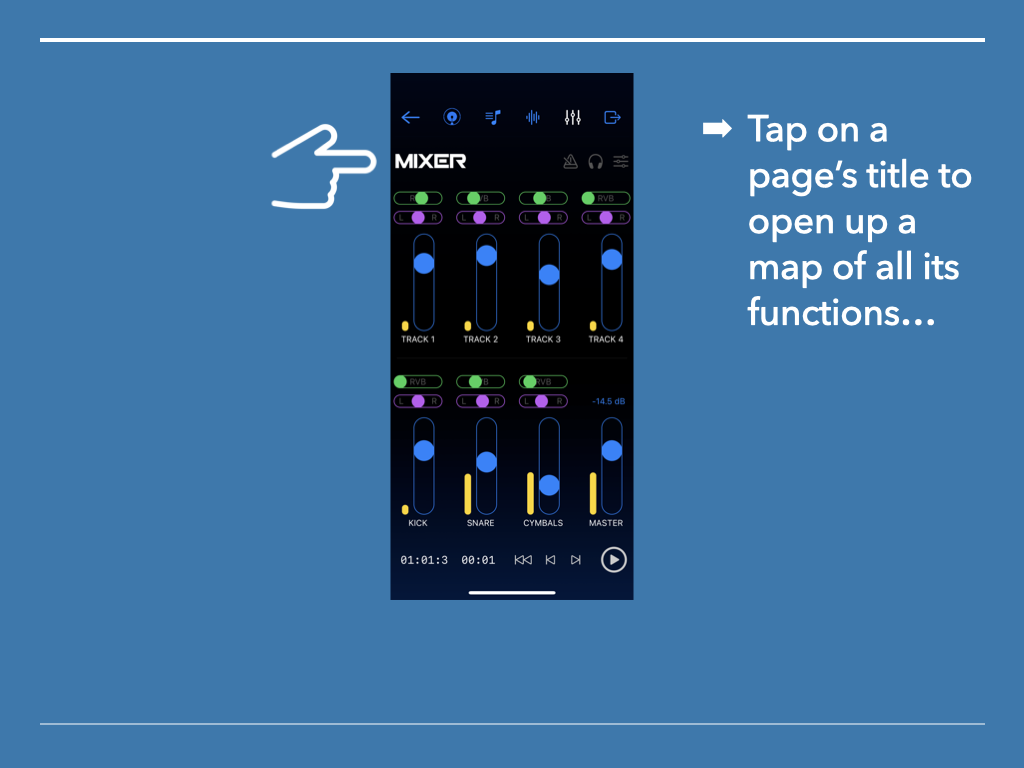
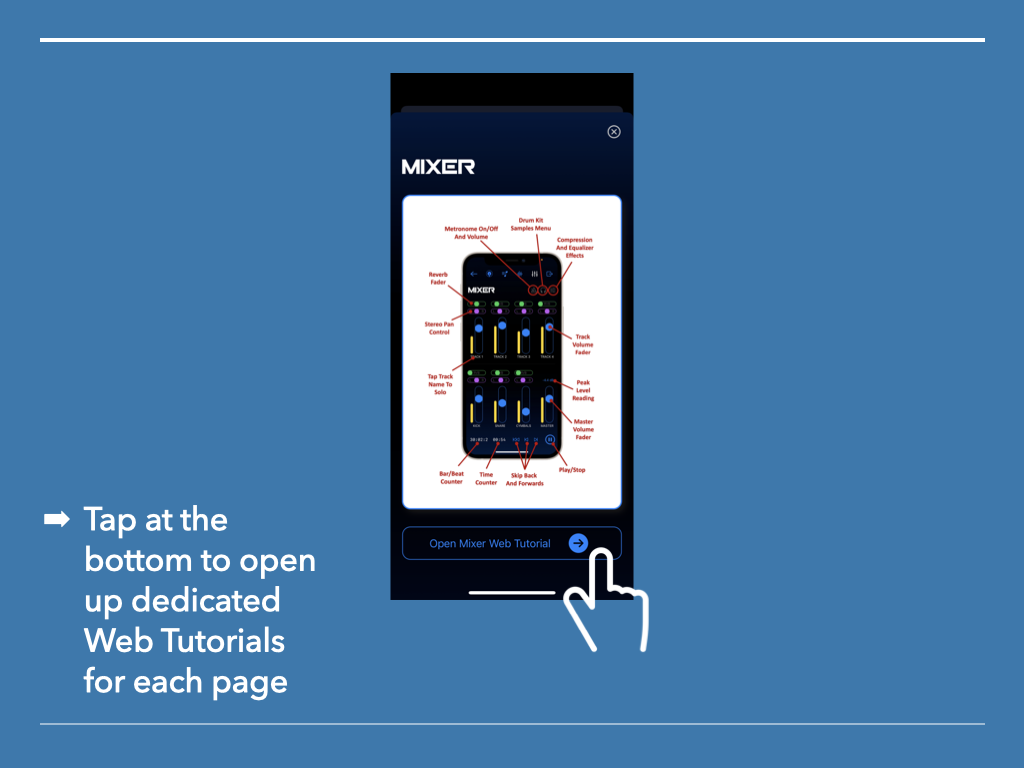
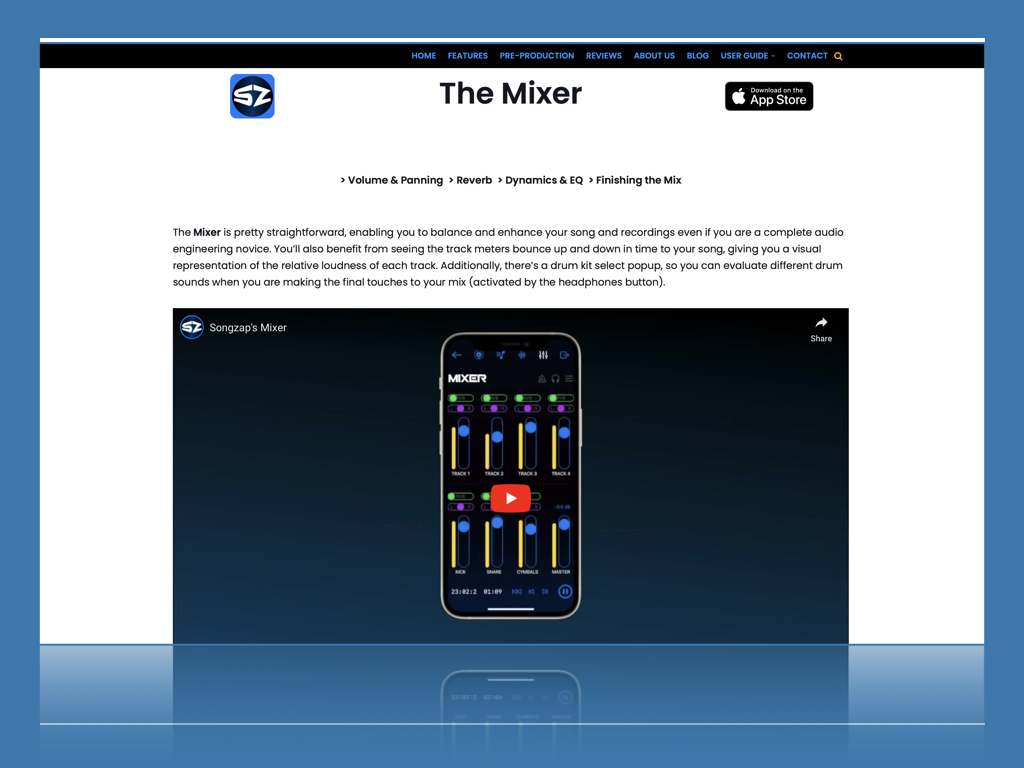
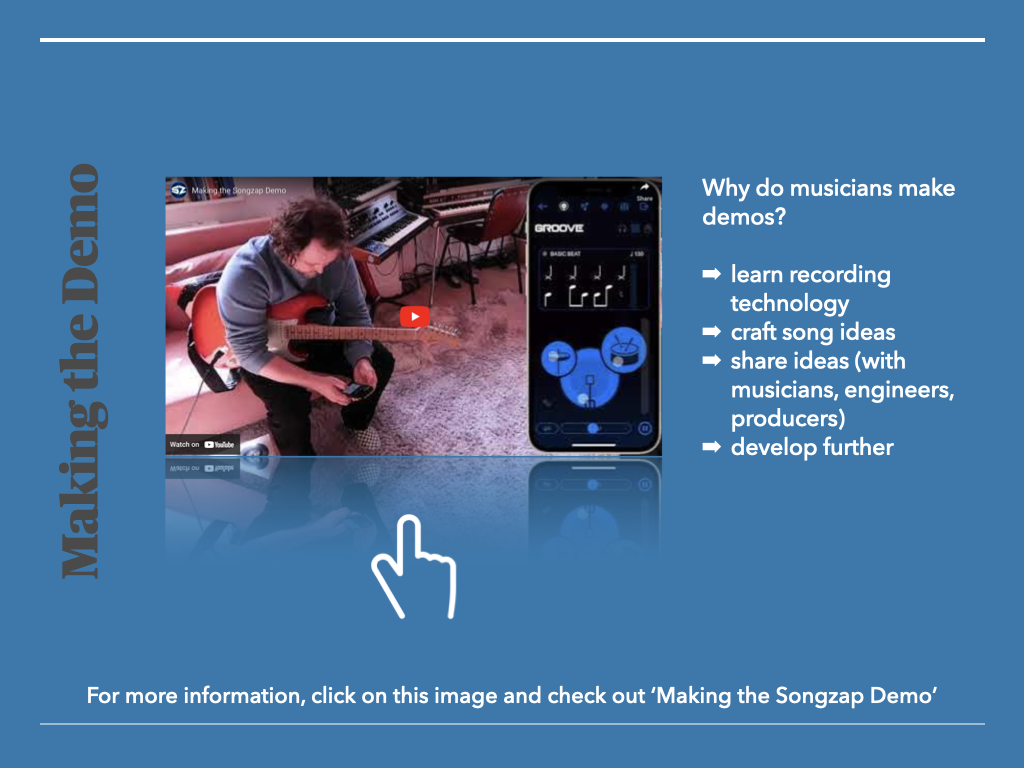
The elements of song creation
Following the demo song exploration, you’ll have a better understanding of the constituent parts that make up a recorded song. Armed with this perspective, you can pick a current song you like, and aim to draw out some of the key elements illustrated below:
- Instrumentation: What instruments are playing? (and who’s the loudest)
- Genre: What’s the style?
- Groove: Can you tap or clap to the beat/groove of the song? (In music we split or count time, often in groups of four or three…)
- Space: Does the artist or the instruments/drums sound like they’re in a stadium, on a theatre stage, or in an intimate setting (living room / small venue); maybe outside by the campfire?
- Arrangement: Can you identify any sections in the song that feel different to each other? Do some of them repeat?
- Lyrics: Do these section reappear with the same or with changing lyrics? How does the ‘story’ of the song unfold?
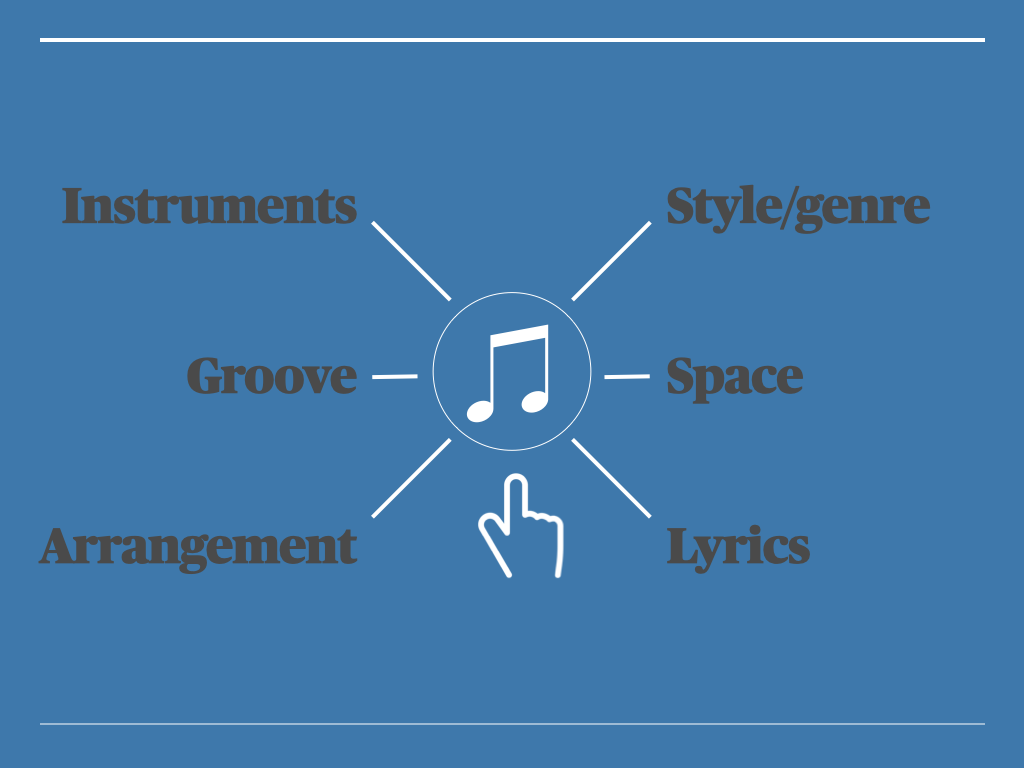
Here are some more things to consider… Why do you like the song and the artist? What appeals to you? Is there a strong beat or rhythm you gravitate to? Is it about the quality of the voice? Do you identify a certain amount of excitement and energy in the recorded voice and instruments? You can also pick a film or TV musical piece that you find inspiring, effective or captivating to analyse. Identify the instruments used: is it electronic or orchestral (or hybrid), are there any voices in the orchestration, why does it work so well as an accompaniment to the visuals?
Values of recording music
After exploring the included demo and analysing a released song, let’s consider for a moment what the value of capturing musical inspiration in sonic form may be:
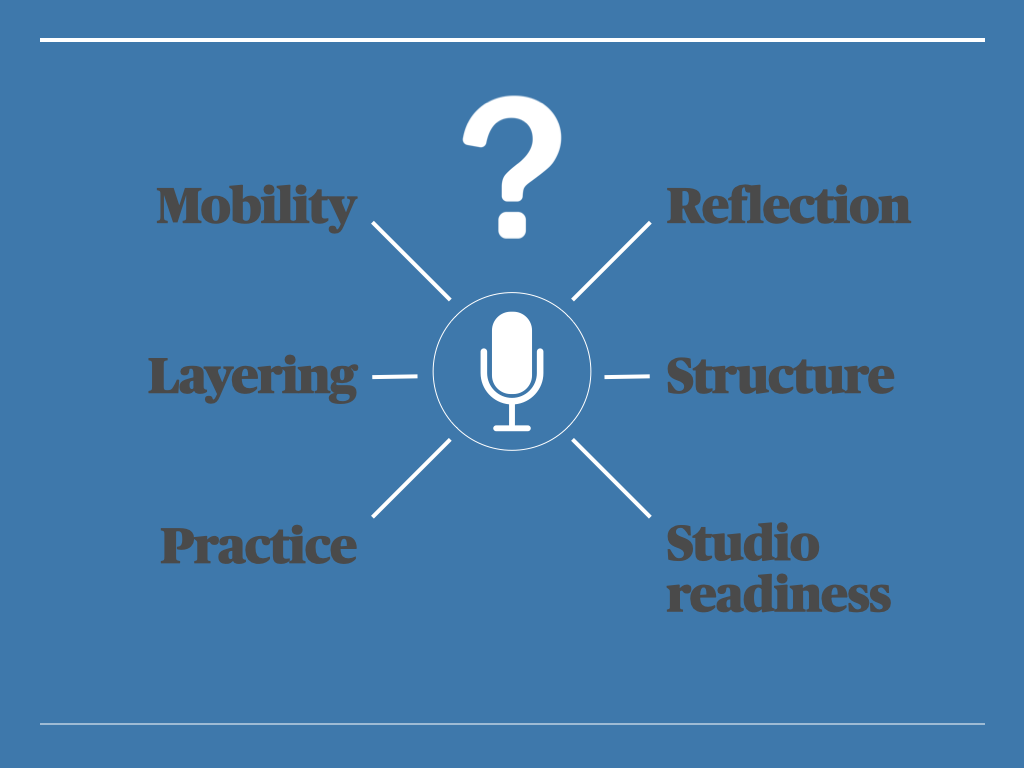
- Capture an idea on the go
- Analyse a musical idea or performance
- Build on an idea with layers
- Think about the next section (that keeps the song going, keeps it interesting, helps tell an unfolding story)
- Develop your ability to record performances (practice performing and practice recording)
- Prepare for more advanced recording scenarios (making demos is a craft; turns you into a better studio musician, hey, even a producer – practice makes perfect)
Record something (and send it to a friend!)
The point of this exercise is to get used to the idea of capturing sound and practice pointing the phone device’s microphone towards interesting sonic sources – the mic becomes like an extension of your ‘ear’ to the world. It’s useful to get used to the notion of actively listening to the world around you, and then, after capturing sounds, to reflect upon them outside of the environment or context in which they were recorded in. Do the recorded sounds reflect their causality after the event, has something been lost, do they sound abstract and/or like something other than the actual source?
You can record any sound: atmospheric or environmental, domestic, an instrument if you play (or learning to play), a vocal and an instrument performed at the same time, yourself or somebody else, a rap or poem over a Groove Designer beat. Then try to add some layers: adds or shouts over the rap, or a vocal or doubled/additional part to an instrument or previous vocal layer. When you’re done, export the song or piece of sonic collage you have created and share it with a friend who might be interested (see image below). Get some feedback – what did they think? Maybe the file you shared will ignite collaboration… Your friend may want to respond by recording something themselves, or add to your creation.
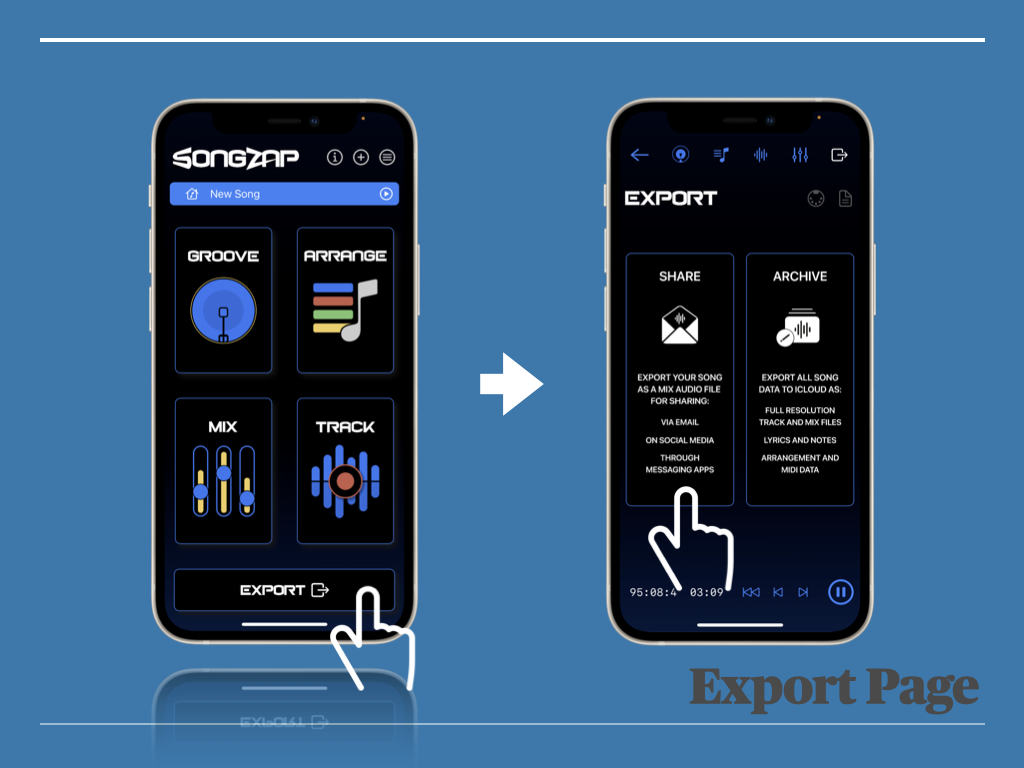
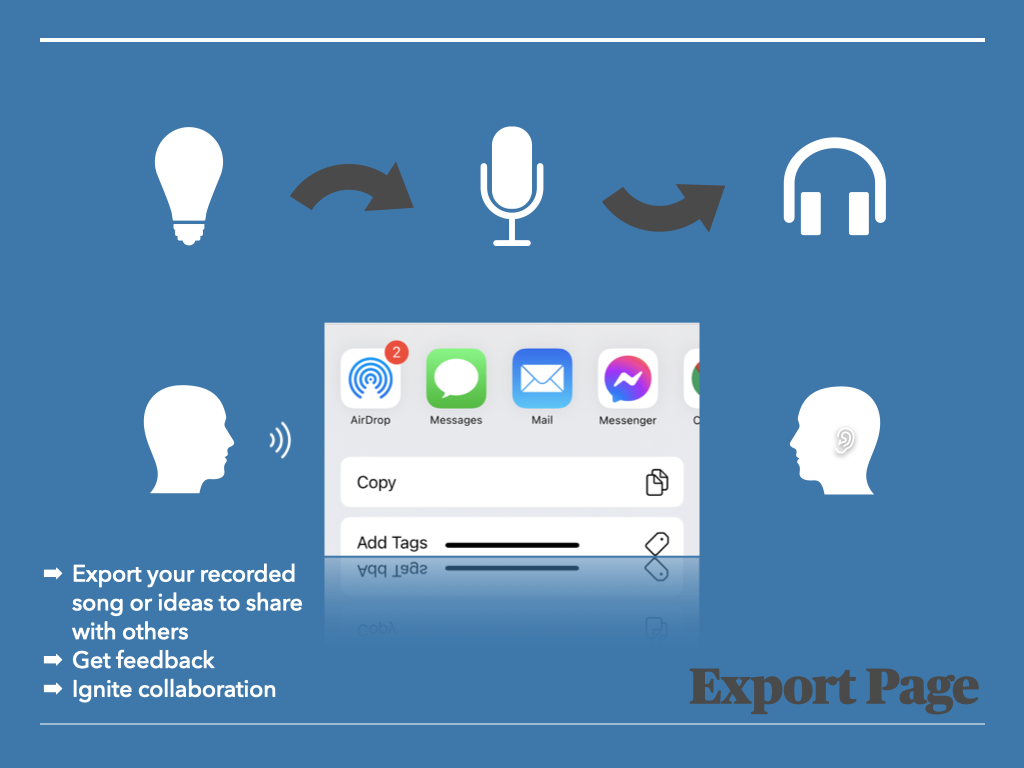
Disclaimer: This course focuses on the creative aspects of recording and demo production, and uses Songzap as its platform. Although you get to learn Songzap as you do it, it does not double as a manual or exhaustive body of Songzap tutorials. For detailed guidance using the Songzap app, you should check out the full User Guide available on this website, complete with instructional videos for each aspect of its functionality. For supportive material specific to Lesson 1, check out Introducing Songzap.
Lesson 2 coming soon….
